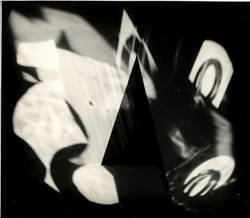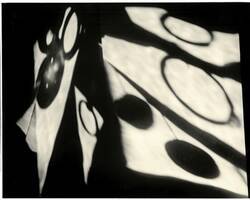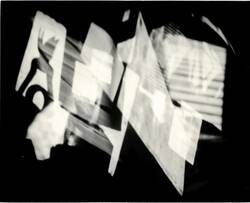Weitere Medien
In the years 1915-1918 Funke first studied medicine, then law, at Charles University in Prague, but he soon abandoned these subjects, turning his attention instead to art history, philosophy, and aesthetics. From 1922 onwards, he worked as a freelance photographer. He
participated in the activities of the Prague Photo Club, founded the Czech Photographic Society together with Josef Sudek and Adolf Schneeberger, and was a member of the photographic section of the Mánes Association of Fine Artists. From 1931, he was an associate professor at the School of Arts and Crafts (ŠUR) in Bratislava and at the State School of Graphic Arts in Prague.
As a member of the left-wing group Sociofoto, he devoted himself to documentary photography and captured the lives of people on the margins of society. After the outbreak of the Second World War, he reduced the scope of his activities. Between 1939 and 1941 he produced the magazine Fotografický obzor [Photographic Horizon] in association with Josef Ehme. He died in a hospital in Kolín during an operation for acute appendicitis.
Jaromír Funke influenced the development of photography as an independent artistic discipline not only as a photographer, but also as a teacher, theorist, critic, and organiser.
The techniques and materials he discovered offered new sensory experiences, as in the case of the Devětsil-associated sculptor Zdeněk Pešánek and the graphic artist Vojtěch Preissig, who, in the second half of the 1930s, became independent of any artist group or particular agenda and dedicated himself instead to abstract painting.
After extensive practical experience in photography, which, as with Josef Sudek, also included
photographs of architectural monuments, Jaromír Funke adopted an imaginative and abstract style. He was particularly interested in the forms of modern architecture, but he also photographed the Gothic parish church of St Bartholomew in Kolín nad Labem. He was especially passionate about the architectural works of Czech Functionalism. Jaromír Funke progressed rapidly from rayographs and photographs of transparent objects to photographing the shadows cast by objects, without including the objects themselves. He concentrated on the transition between light and darkness, mediated by the edge. His photographs from the years 1928-1929 are today called Abstract Compositions.
The avant-garde aesthetics of his photographs and his unconventional manner of working were firmly rejected during the period of socialist realism. Today, Jaromír Funke is one of the world's most respected founders of avant-garde photography.
Of the contemporary artists in this exhibition, it is particularly Ivan Pinkava who has taken up and built upon Funke’s work exploring the problems of light and form.
b. 1896 in Skuteč / Kingdom of Bohemia
d. 1945 in Kolín nad Labem / Czechoslovakia


